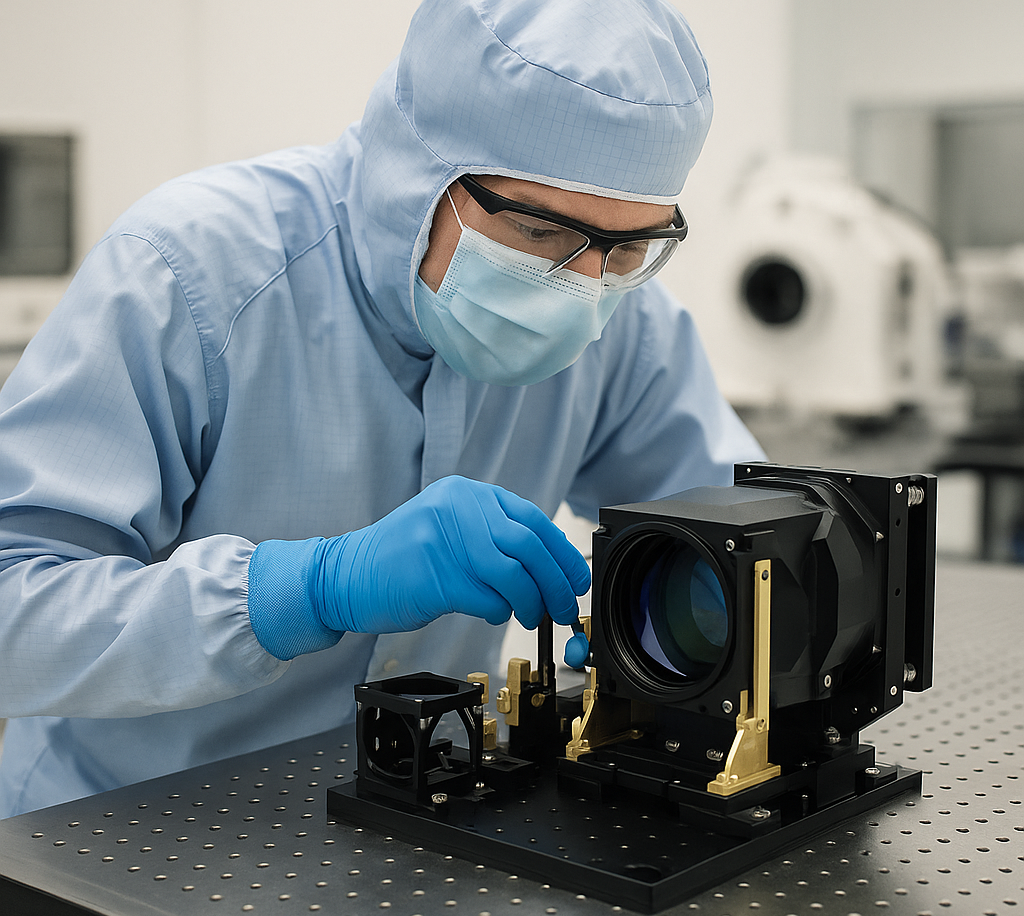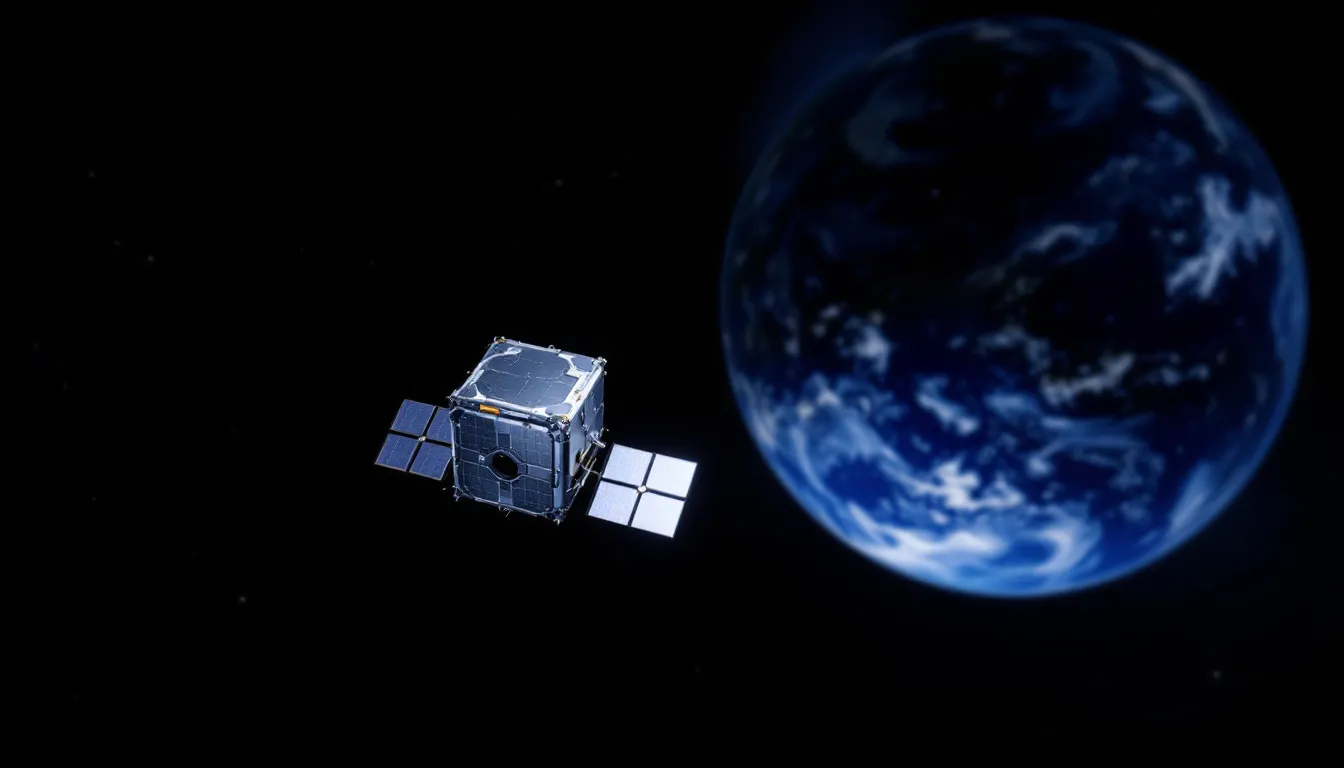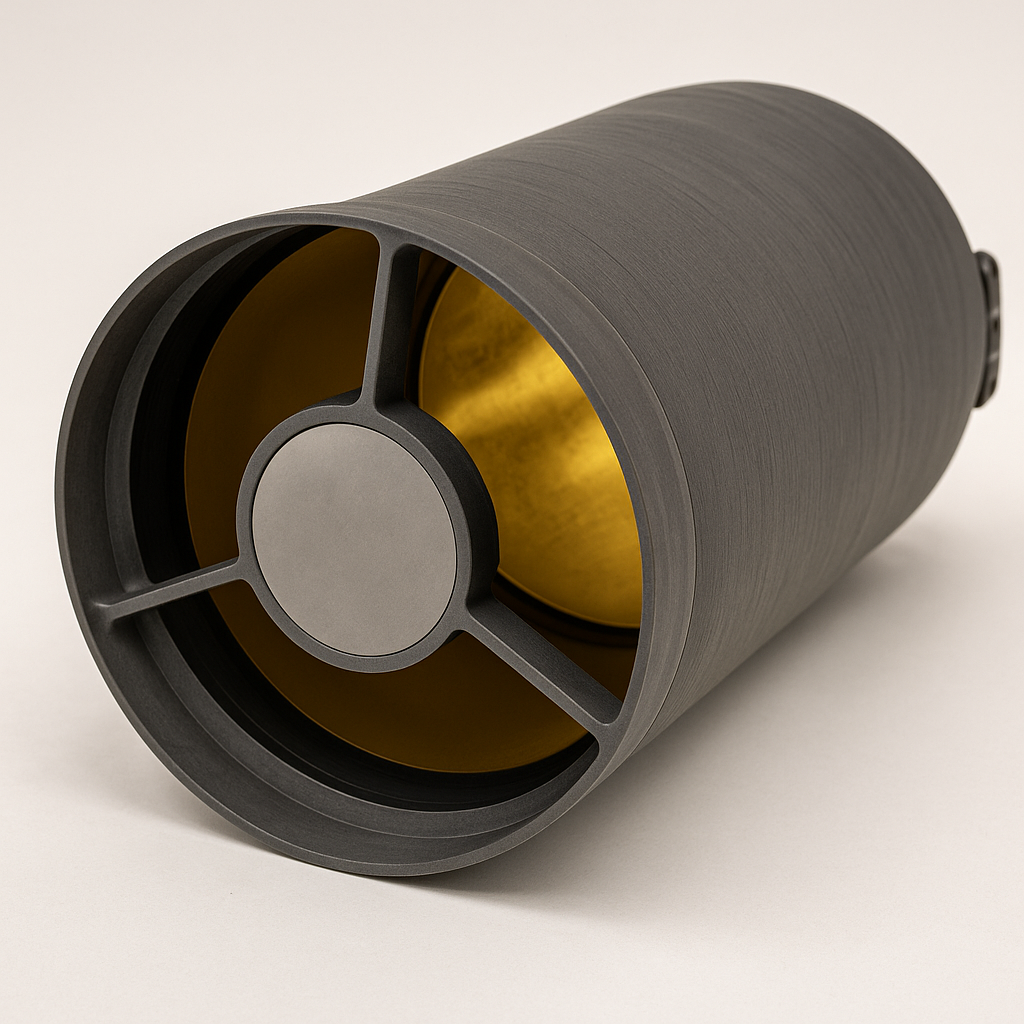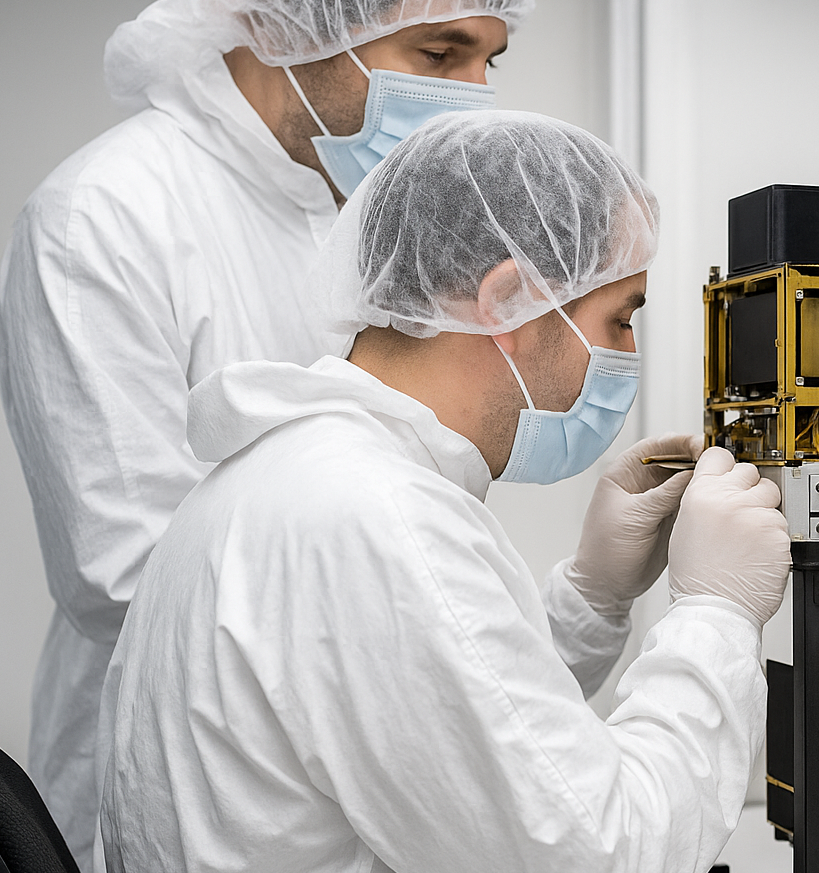Space Optics: Assemblies and Subsystems
Proven Provider of Space-Qualified Optical Modules
Clear Align delivers space optical assemblies, subsystems, and optical systems trusted for critical space missions. We serve a wide range of customers, including those in the defense, aerial imaging, space, and transportation sectors. With over 1,800 complex modules delivered and more than 500 still in flight, we bring extensive experience in designing, manufacturing, and qualifying advanced optical subsystems and components for harsh orbital environments.
Our vertically integrated operations—from optical design through prototyping, manufacturing, and environmental qualification—ensure unmatched reliability and production scale.
Clear Align has developed advanced technologies and modules specifically for demanding space optical applications, further enhancing our capabilities in this field.
Fundamentals of Space Optics

Space optics involves designing and producing precision solutions that perform flawlessly in the extreme conditions in orbit. Each program begins with a rigorous technical review to align specifications, performance requirements, and integration needs.
Space optics development is often focused on specific challenges such as remote sensing of weather, atmospheric turbulence, geology, crop health, spectral measurement using modeling, and system optimization. Additionally, integration is crucial for maintaining precise alignment and ensuring high-quality performance in space.
Whether developing optics for satellites, spacecraft, or ground stations, Clear Align delivers systems that achieve performance at long distances and survive vibration, thermal extremes, and radiation.
We Provide Optical Designs for Space Applications
Designing for various orbits demands a meticulous approach that addresses the unique challenges of the orbital environment. Organizations such as the European Space Agency have spearheaded research and development in space based communication, driving innovation in both optical components and system integration.

Key considerations in opto-mechanical design include ensuring resistance to radiation, managing extreme temperature fluctuations in operation, and withstanding intense vibration during launch. The integration of advanced photonic technologies and adaptive optics is essential for enhancing the rugged performance in space.
Precision alignment and state-of-the-art manufacturing techniques are critical to producing compact and lightweight optical assemblies, which are vital for space missions where every gram and millimeter matter. By leveraging these technologies, engineers can develop optical systems capable of maintaining optimal performance and communication integrity throughout the mission lifecycle. As a result, modern free space communication systems are not only robust but also highly efficient, supporting the growing demands of data transmission and scientific research in space.
Capabilities Across Space-Based Applications
Our space based optical systems support a broad range of missions:
- Smallsat optics and telescopes for imaging and remote sensing, with a focus on high-quality image capture and analysis
- Free space optics for high-capacity data transfer, utilizing advanced tracking technologies to maintain precise alignment and optimal optical throughput
- Optics for robotic arms, surveyors, and rovers
- Optical instruments for environmental monitoring
- Ground-based telescopes optimized for space communication
- Custom optical components and assemblies for research
Our research group collaborates closely on advancing space optics applications, ensuring innovative solutions for challenging environments.
From compact payloads to large-aperture systems, we are committed to delivering high performance solutions optimized for SWaP-C requirements.

Advanced Optical Components and Technologies
Clear Align develops and integrates advanced optical components for free space optics and optical communication. Our work includes high-power lasers, precision optics, and coatings designed for orbit. These optical technologies improve throughput, minimize beam divergence, and support for next-generation optical subsystems.
Space Based Optical Communication
Free space optical communications facilitate high speed data transmission by harnessing the power of light to send information through space. Utilizing laser modulation, these modems can achieve exceptional data rates over long range or just several kilometers, making them ideal for scenarios where traditional communication is not secure, impractical or cost-prohibitive.
A typical solution consists of a transmitter that converts electrical signals into optical signals and a receiver that translates them back into electrical data. This method offers stability and precision, enabling secure and efficient communication between ground stations, satellites, and even between spacecraft. The low cost and scalability of these solutions make them particularly attractive for expanding global broadband coverage, especially in remote or underserved regions.
Adaptive Optics for Space
Adaptive optics technology is revolutionizing space based communication by enabling real-time correction of distortions that can degrade signal quality over distances. In space applications, deformable mirrors and sophisticated control algorithms can effectively compensate for atmospheric turbulence and other dynamic factors, ensuring that signals remain sharp and reliable. While we don't make adaptive optics, we do integrate them into our work.
Ultrastable and Ruggedized Optical Systems
Ultrastable and ruggedized optical systems are fundamental to the success of space operations, where optical assemblies must endure the harshest conditions. These systems are engineered using specialized materials and advanced manufacturing processes to ensure they maintain their optical properties despite exposure to extreme temperatures, radiation, and launch vibration.
Optical modules are designed for long-term stability, making them ideal for applications such as precision navigation, timing, and scientific measurement in space. Ruggedized systems, meanwhile, are built to withstand the mechanical stresses encountered during launch for operation, and are commonly deployed in spacecraft but can aso be deployed as airborne instruments. The continued development of ultrastable and ruggedized optical payloads is enabling new frontiers in space exploration, communication, and scientific research.
Testing and Verification of Space Optical Modules In House
Ensuring the performance and and operational readiness requires rigorous testing. Clear Align conducts much of its environmental qualification in house including thermal and mechanical shock testing, vibration, and thermal cycling, to validate performance.
Our verification protocols evaluate beam quality of lasers, alignment stability, and throughput for optical communication channels. We ensure that optical components such as lenses, detectors, and reflective elements maintain precision alignment and deliver clear images across the mission lifecycle.
Best Practices in Space Optics Development
Drawing on decades of space heritage, Clear Align applies industry best practices:
- Review environmental conditions early to drive robust optical design.
- Engineer for stable alignment under temperature swings and launch loads.
- Use high-quality optical components designed for radiation environments.
- Validate with end-to-end verification to ensure meeting mission demands.
This disciplined approach ensures each payload is ready for deployment in the most demanding space applications.
Future of Space Optics
The future of space optics is accelerating with demand for imaging and optical communication, deep space exploration, and space missions that require higher data rates and lower latency. Our advancements in compact, lightweight optics continue to improve the SWaP for imaging and free space optical (FSO) communication connecting satellites, ground stations, and networks across Earth and beyond.
Clear Align develops solutions that enable secure, efficient, and low cost access to data for orbital systems. From instruments for science payloads to telescopes and receivers, we are building the solutions that will shape tomorrow’s space based economy.
Why Clear Align
- Delivered over 1,800 space-qualified subsystems to leading organizations in the USA, including NASA & MDA, as well as components for our european customers aligned with The European Space Agency
- Proven flight record: 900+ units in orbit today
- In-house manufacturing, coating, and environmental qualification labs
- Expertise in free space optics, refractive optics and reflective telescopes
- Full lifecycle support from design through sustainment

Clear Align: your trusted partner for subsystems—built for operational readiness and the future of space.